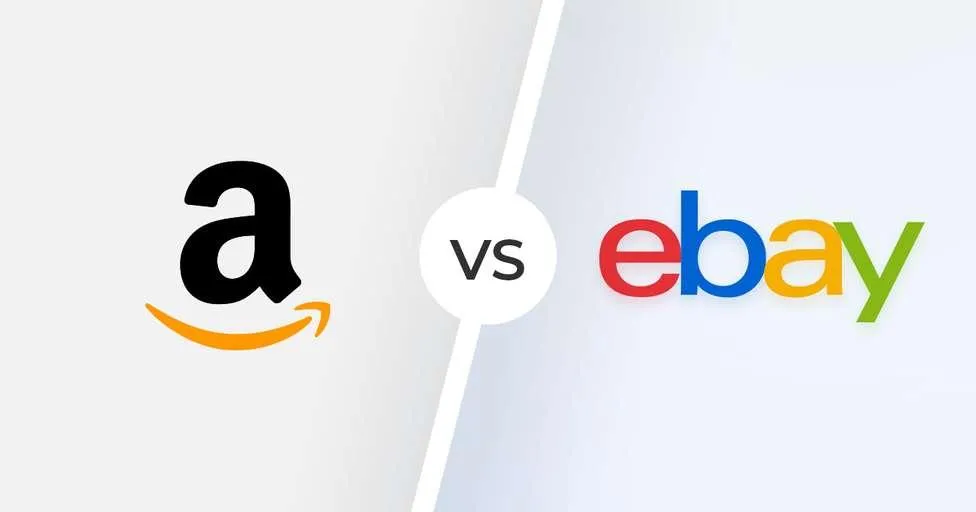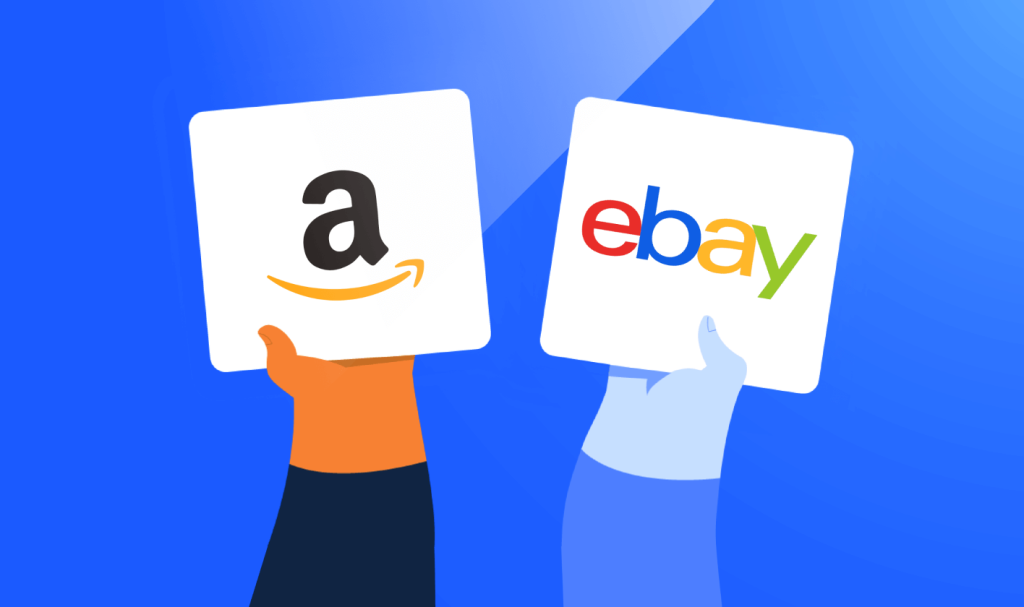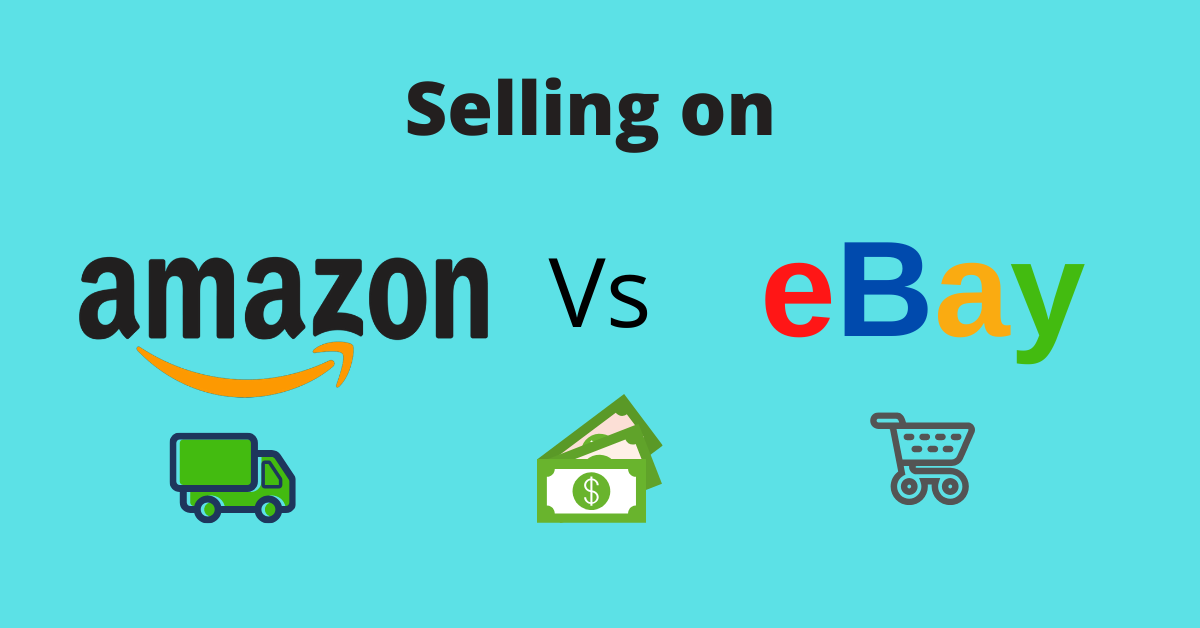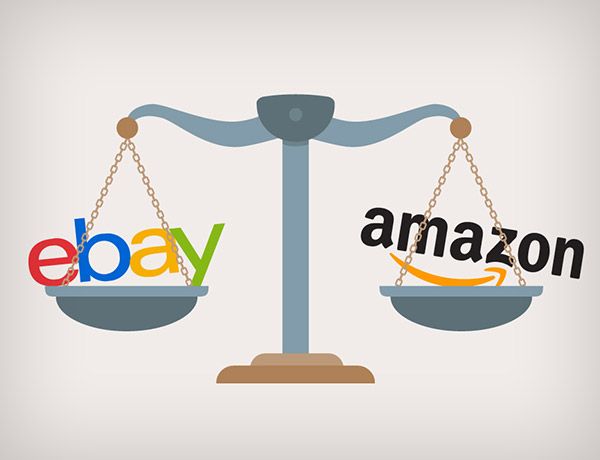PRIVATE LABEL SHIFU BLOGS
Ready to dive into more exciting content? Explore our latest blogs now!

Amazon vs. eBay in 2024: The Best Marketplace for Sellers
“When a person really desires something, all the universe conspires to help that person to realize his dream.” – Paulo Coelho
In today’s digital landscape, e-commerce sellers have a plethora of platforms at their disposal for promoting and selling their products. Options like Shopify, Walmart, and Etsy provide unique opportunities to reach consumers, each with its own set of features and audiences.
However, two of the most enduring and popular platforms remain Amazon and eBay. These platforms not only have a rich history—Amazon being the first launched in July 1994 (initially as Cadabra, rebranded to Amazon in 1995) and eBay following shortly after in September 1995—but they also rank as the top (#1) and third (#3) highest-performing e-commerce sites today.
With their long-standing presence in the market, many sellers are faced with the question: which platform is the better choice for their business?
Both Amazon and eBay offer compelling advantages, making it essential to understand the key differences between the two.
In this article, we will delve into the specifics of each marketplace, exploring the unique characteristics that might make one more suitable than the other for your particular business model. By analyzing various factors such as target demographics, fee structures, selling formats, and seller support, we aim to guide you in making an informed decision about where to invest your efforts in the ever-evolving world of online selling.
Which Platform Do Consumers Trust More: Amazon or eBay?
When it comes to consumer trust, Amazon generally holds a significant advantage over its competitors, including eBay. This trust is not merely a byproduct of its success; it is a core component of Amazon's business philosophy, deeply embedded in the company’s vision, mission, and values. Amazon prioritizes customer satisfaction, aiming to create a shopping experience that fosters loyalty and confidence among its users.

Amazon Returns Policy vs. eBay Returns Policy
Amazon's Returns Policy:
One of the key reasons consumers often choose Amazon for their online shopping needs is the straightforwardness and reliability of its returns policy. Amazon’s A-Z Guarantee plays a pivotal role in this, ensuring that shoppers can receive a full refund if they are dissatisfied with the quality of their purchase or its delivery time. This commitment to customer service minimizes the perceived risks associated with online shopping, as customers know they have recourse if something goes wrong. For many consumers, this reassurance can be the deciding factor in where to make a purchase.
eBay's Returns Policy:
In contrast, eBay's returns policy can be far more complex and less consumer-friendly. While eBay does allow sellers to set their own return policies, many opt for the ‘No Returns’ option, which can leave buyers feeling vulnerable. If a customer receives a product that does not meet their expectations or is defective, they may have little to no recourse. This lack of assurance can significantly undermine consumer trust, as potential buyers may hesitate to purchase from sellers who do not offer a return option.

As a seller on eBay, you might believe that the ‘No Returns’ setting protects your business. However, this approach can be detrimental in the long run. By signaling that returns are not an option, you inadvertently communicate to potential customers that they cannot trust the quality or reliability of your products.
Building Trust Through Customer Support
Consider your own shopping habits:
Do you prefer businesses that offer ongoing support after the purchase, or those that seem to disregard customer satisfaction once the transaction is complete? Amazon excels at the former, cultivating brand loyalty by providing excellent post-purchase support. This strategy not only enhances the shopping experience but also encourages consumers to take a chance on products they might otherwise overlook.

As a seller on Amazon, you benefit directly from this trust. The confidence that Amazon instills in its customers translates into higher conversion rates and increased sales for sellers who adhere to its customer-centric policies. In this way, Amazon's focus on customer satisfaction ultimately creates a win-win situation for both consumers and sellers.
Comparing Fulfillment Options: eBay vs. Amazon

When it comes to fulfillment options, eBay provides sellers with a single choice: either pack and ship orders themselves or enlist the help of a third-party fulfillment center. This means that eBay sellers are responsible for every aspect of order processing, which can be time-consuming and labor-intensive.
In contrast, Amazon offers two distinct fulfillment methods: sellers can either handle fulfillment themselves through Fulfillment by Merchant (FBM) or leverage Amazon's services with Fulfillment by Amazon (FBA). This latter option, FBA, is what truly differentiates Amazon from eBay.
Operations:
With eBay, sellers must manage all facets of their business independently, from inventory management to shipping logistics. This can be a daunting task for many, especially those just starting. On the other hand, Amazon alleviates much of this burden by taking care of critical operational aspects for sellers using FBA.
Fulfillment:
Amazon’s FBA service encompasses storage, picking, packing, and shipping of products, as well as handling returns and refunds. This comprehensive support allows sellers to focus on other vital areas of their business, such as marketing and product development, rather than getting bogged down in logistics.

Financial Considerations:
While Amazon FBA does come with higher fees compared to eBay’s fulfillment method, it's important to consider the overall cost-effectiveness of the service. When you factor in the expenses associated with storing, packaging, and shipping your products independently, the financial gap narrows significantly. In many cases, sellers find that FBA can actually save them money in the long run due to its efficiency and scale.
Ultimately, how you choose to fulfill your orders is entirely your decision. The flexibility offered by Amazon allows sellers to opt for a method that best suits their business needs, a luxury not available to those selling on eBay. This choice can be a significant advantage, especially for sellers looking to streamline their operations and enhance their customer service.
Comparing Selling Costs on eBay and Amazon
Overall, eBay tends to have lower fees compared to those associated with selling on Amazon.

eBay's Fees
When selling on eBay, sellers should expect to pay the following fees:
Insertion Fees: This fee is charged when a seller creates a listing. eBay offers sellers 250 free insertion fee listings each month, with the potential for additional free listings if they operate an eBay store.
Final Value Fees: After a product sells, eBay takes a percentage of the item's final sale price, which includes shipping and handling but excludes sales tax. The fee structure for most items includes both final value and insertion fees.
Payment Processing Fees: Since eBay requires sellers to utilize their managed payments system, these fees are incorporated into the final value fees.
Optional Listing Upgrade Fees: If you wish to enhance your listing with special features, such as bold font, subtitles, or a minimum/reserve price, additional fees apply. These optional upgrades can add up quickly, but eBay provides a fee calculator to help sellers estimate their total costs before listing a product.
For instance, if you have a fixed-price item selling for $22.95 in the Baby category, the fees would amount to $3.44. Additionally, if you choose to offer free shipping, you would need to cover that expense as well.
Despite these costs, eBay’s overall fees remain lower than those found on Amazon.
Amazon's Fees

Amazon's fees vary based on the type of product being sold and the chosen fulfillment method, whether Fulfillment by Amazon (FBA) or Fulfillment by Merchant (FBM).
Note: The total cost for ‘Your Fulfillment’ (FBM) does not include shipping expenses. If you opt for FBM, you must factor in shipping costs when calculating your profit margin.
FBM Fees
When selling through FBM, the primary fees you would incur are related to the ‘Selling on Amazon’ costs, which include:
Amazon Referral Fee: For each product sold, Amazon takes a referral fee based on the total sales price. This fee varies by product category, but on average, sellers can expect to pay around 15% per sale.
Fixed Closing Fee: This fee applies only to individual selling plans, as opposed to professional selling plans. Individual sellers are charged an additional $0.99 per item sold.
FBA Fees
In addition to the ‘Selling on Amazon’ fees, FBA sellers must also pay:
FBA Fulfillment Fees: These are charges from Amazon for fulfilling your product orders, which are determined by the weight and size of the items.
Monthly Storage Fees: Amazon imposes monthly storage fees based on the space your inventory occupies in their fulfillment centers, calculated using your average daily volume in cubic feet.
For example, if you sell a product like the pee pads for $36.99 as an FBA seller, you would incur at least $14.59 in fees. Conversely, if you sell the same product at the same price through FBM, your fees would amount to a minimum of $6.54, not including shipping costs.

However, these are not the only fees Amazon sellers should be aware of. Regardless of the fulfillment method chosen, all sellers on Amazon must also consider:
Individual Per-Item Fees or Subscription Fees: When registering as a seller, you can choose between an individual or professional account. Individual sellers are subject to a $0.99 fee per item sold, while professional sellers pay a monthly subscription fee of $39.99.
Refund Administration Fees: Although these fees apply only when a customer requests a refund, it’s essential to note that Amazon charges a fee for processing these reimbursements. The fee is either $5.00 or 20% of the refunded amount, whichever is lower.
Business Models: eBay vs. Amazon
Both Amazon and eBay present viable platforms for selling new and used products in the dynamic landscape of e-commerce. Each platform supports various business models, allowing entrepreneurs to find success through multiple avenues. Here’s a closer look at several popular models that work effectively on both sites:
Private Label: This model involves branding and launching your own products on Amazon. Sellers create unique products, often sourced from manufacturers, and sell them under their own brand name. This approach allows for greater control over pricing, branding, and marketing.
Retail Arbitrage: In this model, sellers purchase products from retail stores—such as clearance items or discounted goods—and then resell them on Amazon for a profit. This strategy requires keen market knowledge and an eye for deals, allowing sellers to capitalize on price discrepancies between retail and online marketplaces.
Online Arbitrage: Similar to retail arbitrage, this method involves buying products from online retail stores at a lower price and reselling them on Amazon. Sellers can often leverage tools and software to identify profitable products quickly, making it a popular choice for those who prefer online shopping.
Wholesale: Wholesale selling entails purchasing products in bulk from manufacturers or distributors at a discounted rate and reselling them on Amazon. This model can provide steady profits, especially if you focus on established brands with high demand. It often requires an upfront investment but can lead to significant returns over time.
Handmade: For those with a creative flair, the handmade model allows sellers to craft their own products and sell them directly on Amazon. Unlike traditional manufacturing, this approach emphasizes unique, handcrafted items, appealing to consumers seeking personalized or artisanal products.

By conducting thorough product research, identifying the right suppliers, and creating compelling listings, sellers can achieve profitability and foster growth across both platforms. Whether you’re looking to scale your business, diversify your product offerings, or enter the e-commerce space for the first time, both Amazon and eBay provide the necessary tools and reach to help entrepreneurs succeed year after year.
Selling on Amazon vs. eBay: Which Will You Choose?
Now that you have a clearer understanding of the differences between Amazon and eBay and how each platform can benefit your business, it’s time to make a decision: will you choose Amazon, eBay, or perhaps even both?
Regardless of your choice, there has never been a better time to start your online business. Each platform offers unique opportunities for growth, and understanding these can set you on the path to success.
At AMZ Shifu, we provide personalized guidance tailored to your business goals, whether you're venturing into Amazon, eBay, or both. Our expertise can help you navigate the complexities of either platform and develop a winning strategy that maximizes your potential.
Book a Call with us today!
Book a call with us today to discover how we can support you on your seller journey!
GET THE LATEST NEWS
AND MEET AND SEE REAL CONVERSATIONS FROM OUR SUCCESSFUL MENTEES
⭐⭐⭐⭐⭐
Books Recommendation for Amazon Private Label
IF YOU ARE SERIOUS ABOUT TURNING YOUR LIFE INTO A NEW CHAPTER CLICK THE BUTTON BELOW TO APPLY FOR OUR DISCOVERY CALL
NO COMMITMENT REQUIRED IF YOU ARE NOT A GOOD FIT
DISCLAIMER: The sales figures stated anywhere on this funnel are individual sales figures and marketing results. Please understand that sales figures are not typical, and we are not implying that you will duplicate them. We have the benefit of doing online marketing for 4+ years, and have an established following as a result. The average person who simply purchases any “how-to” program may not follow through on what they are being taught and because of that we cannot guarantee any specific result. We are using these references for example purposes only. Sales figures will vary and depend on many factors including but not limited to background, experience, and work ethic. All business entails risk as well as massive and consistent effort and action. If you’re not willing to accept that, this is not for you.
>ABOUT THE STRATEGY SESSION: After completing an application, you will get the opportunity to schedule in a Strategy Session with a qualified person from our team. This is completely optional. The Session lasts about 45 minutes and if you do not want to work more closely with us, you can leave without buying anything. The Strategy Session to provide insights insights on the operations of your business and offer strategies for growth that you will be able to implement right away.
NOT FACEBOOK™: This site is not a part of the Facebook™ website or Facebook Inc. Additionally, This site is NOT endorsed by Facebook™ in any way. FACEBOOK™ is a trademark of FACEBOOK™, Inc. Hi! We use cookies, including third-party cookies, on this website to help operate our site and for analytics and advertising purposes. For more on how we use cookies and your cookie choices, go
here for our cookie policy!
@2024 AMZSHIFU.COM All Rights Reserved










